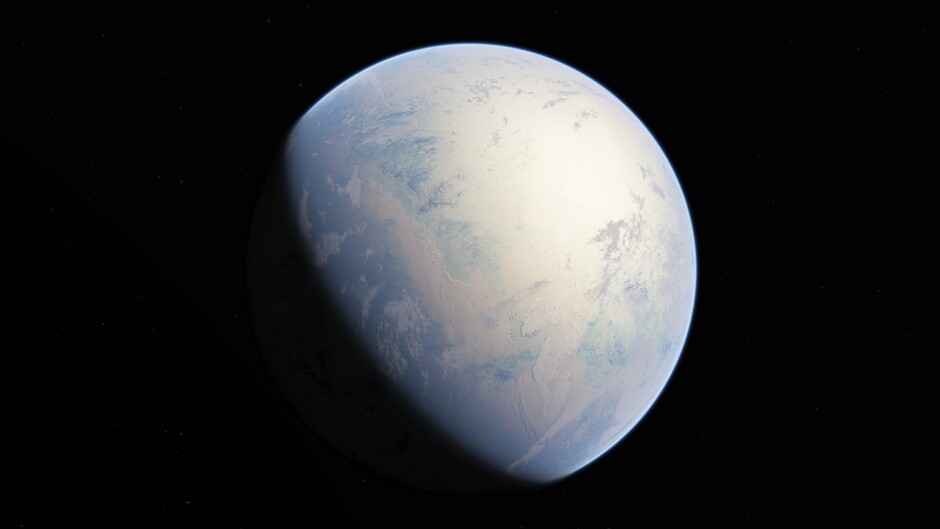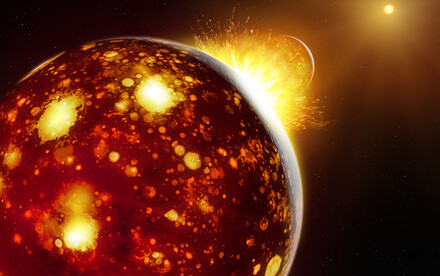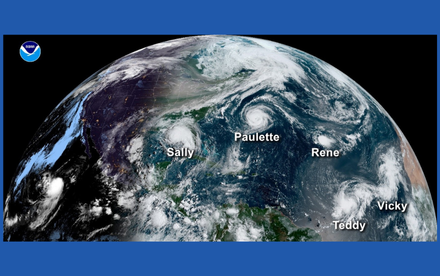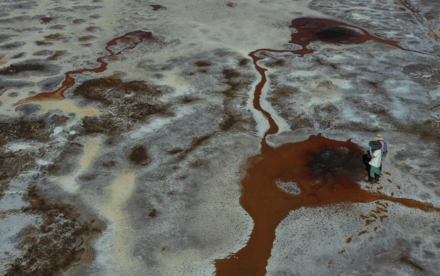18 Jun 2025
Scientists Discover a 'Great Pause' in Earth's Oceans After Snowball Earth: A Multi-Million-Year Sediment Starvation That May Have Set the Stage for the Dawn of Animal Life

Artist's rendition of a fully-frozen Snowball Earth with no remaining liquid surface water. Image credit: Oleg Kuznetsov - 3depix - http://3depix.com .
A new study published in Earth and Planetary Science Letters reveals that in the aftermath of the 'Snowball Earth'—the most severe ice age in our planet's history—the supply of sediment from land to the world's oceans was dramatically reduced for potentially millions of years.
Researchers from the HKU Department of Earth Sciences, in collaboration with international partners, used a ‘virtual Earth laboratory’ to show how an extreme sea-level rise effectively cut off the supply of sediment to the outer continental shelf, creating unique marine environments that coincide with the first appearance of complex animal life.
The study confronts a long-standing geological puzzle: the origin of ‘cap carbonate’ rocks, which are found globally and sit directly atop glacial deposits from the Cryogenian period. The new research mounts a significant challenge to the prevailing ‘transgressive’ theory — which suggests these rocks formed rapidly — by providing powerful evidence for a ‘hiatus’ model, in which the rocks formed slowly during a lengthy pause in sediment delivery to the ocean.
The study’s computer models reveal a dramatic sequence of events after the initial deglaciation:
- The Cause: The end of the Snowball Earth glaciation triggered an extreme sea-level rise of at least 800 meters.
- The Trapping: This sea-level rise flooded vast, deep basins carved into the continents by glaciers, creating expansive inland seas that acted as giant sediment traps.
- The Result: Sand, mud, and silt washing off the recovering continents were trapped in these near-shore environments and could not reach the outer oceans, effectively starving them of sediment.
A key finding is the staggering duration of this period of sediment starvation, which the authors call the ‘Great Pause’. While a typical post-ice age sediment pause on a modern continental shelf might last 90,000 to 160,000 years, the models show this period was dramatically longer following Snowball Earth. The Snowball glaciers had likely created continental shelves that were far wider and deeper than today’s, creating enormous space for sediment to be trapped:
- On a more realistic ‘glacial shelf’, the models predict that sediment starvation lasted approximately 2 million years.
- Using an ‘Antarctic-like’ margin — arguably the best modern comparison for the post-Snowball Earth world — the hiatus lasted over 3 million years.
‘Imagine oceans suddenly becoming much clearer, with less mud and sand clouding the water,’ explains Dr Nordsvan, lead author and postdoctoral fellow at the HKU Department of Earth Sciences. ‘This starvation would have dramatically altered nutrient cycling and could have created entirely new types of seafloor habitats dominated by carbonates instead of mud. While factors like rising atmospheric oxygen levels are crucial for early animal evolution, our study indicates that large-scale geological changes, driven by the extreme Snowball Earth glacial cycle, could have created unique environmental opportunities favouring the evolution and diversification of complex organisms.’
Crucially, the study's conclusions are not just theoretical. The computer models predicted a specific architectural pattern for the resulting carbonate rock layers: a sharp base, thickening away from the ancient shoreline, with a gradual transition to the mud and sandstones above. This exact pattern is observed in the Snowball Earth cap carbonates in Australia, providing powerful, real-world validation for the model's findings.
‘Our computer simulations show how the massive glaciers of Snowball Earth essentially reset coastal sedimentation,’ adds Professor Ross Mitchell of the Chinese Academy of Science and one of the study’s authors. ‘This resulted in vast areas of the ocean being cut off from their usual supply of sand and mud for potentially millions of years. While seemingly harsh, this sediment starvation could have fundamentally changed ocean chemistry and ecology, possibly opening doors for new, complex life forms to evolve.’
‘Much like our lives, there’s nothing like a newly built neighbourhood to spur on a new generation to move in, settle down, and create offspring of their own,’ adds Mitchell.
These findings not only solve a geological puzzle but also provide a framework for understanding how extreme climate events can reset ecosystems on a planetary scale, paving the way for evolutionary innovation. The authors note that the next steps will involve developing higher-resolution models to investigate the local and regional details of these processes, helping to fully understand the aftermath of this critical period in Earth's history.
The research highlights the profound link between geology and biology during a critical period when Earth was recovering from extreme climate change and complex life was beginning to reshape the planet's ecosystems.
Read the journal paper here.







